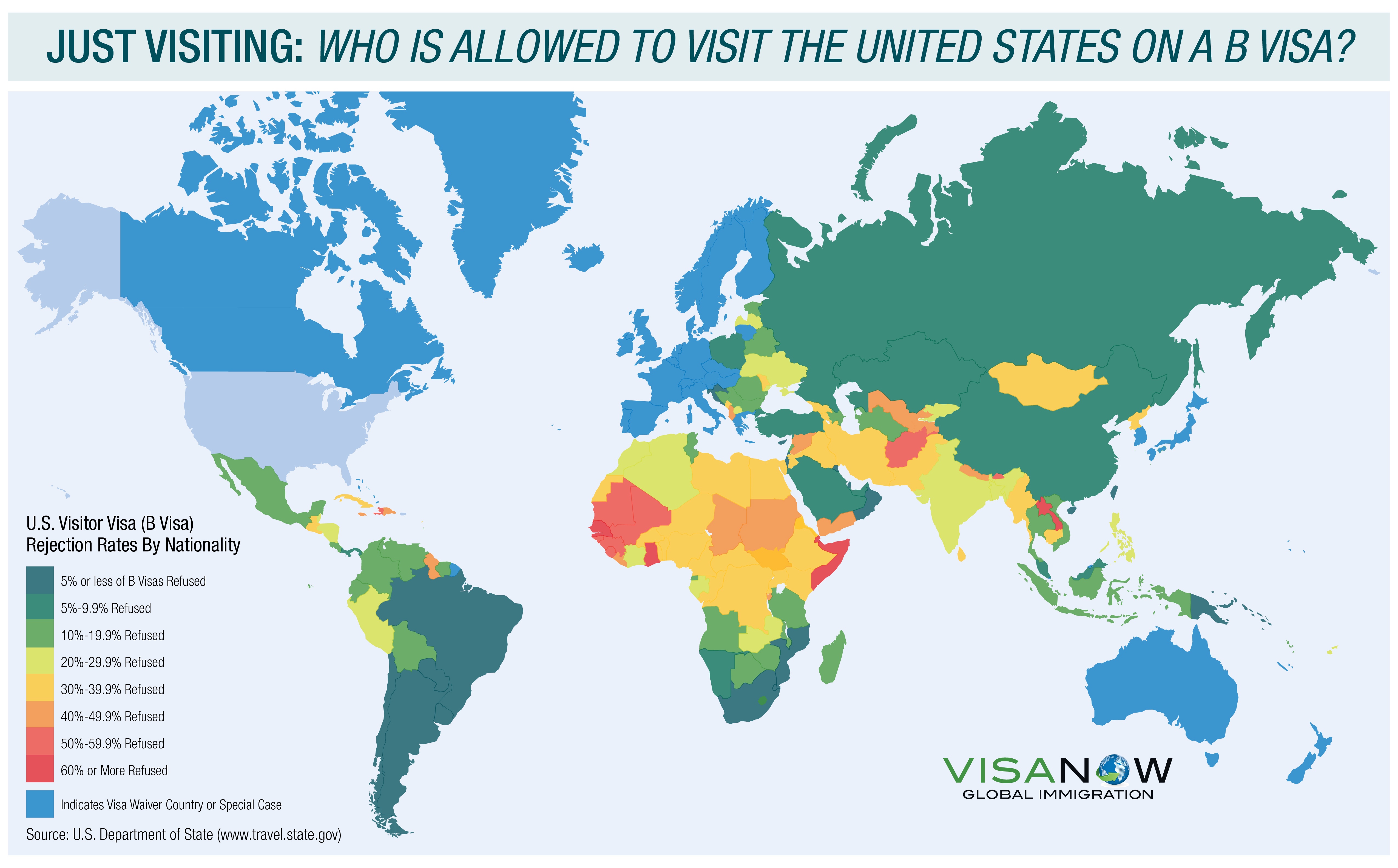The Unintended Side Effects of Restricting U.S. Visas

By:
If you’ve ever had to apply for a U.S. passport or a visa to visit a foreign country, then you know that the process can involve hefty fees and long wait times. This process is much more expensive and arduous for foreign nationals who want to come to the U.S.
ALSO: The 2 Biggest Lies About Immigrants In the U.S.
Unless you are from Canada or Western Europe, you will find it increasingly difficult to come to the U.S. to study, do business, or even go on vacation because of strict visa requirements.
What types of visas are there?
The type of visa you need depends on what you plan on doing in America. If you’re just visiting, you’ll need a B Visa. There are two: "Business (B-1)" and "Tourism and Visit (B-2)."
You'll need a different kind of visa if you're coming to the U.S. to study, to work as a member of the foreign press, to work as a crew member on a ship or aircraft, or to perform professionally as a musician, dancer, or athlete.
ALSO: Next Time You Hear "Immigrants Take Jobs," Remember This
Even if you're just visiting, you can expect to be denied a B visa, according to Visa Now. Why? The U.S. government assumes that you may try to stay in the country permanently, beyond the six months granted under the visa.
What’s the process for applying?
The process for applying for a B visa usually looks like this, according to Bloomberg Business and the U.S. State Department:
- Complete an online application
- Upload photos
- Assemble other documents
- Schedule an appointment at an applicant service center or consulate
- Pay an application fee
- Give fingerprints
- Be interviewed by a consular official
- Wait
Take a look at Visa Now's map to see which countries are generally denied visa requests.
 Visa Now - visanow.com
Visa Now - visanow.com
Getting to America is hard and expensive
Applying for a visitor visa can be a headache that is time-consuming and expensive. But getting a visitor visa is nothing compared to the process facing potential new citizens who wish to immigrate and start a new life in America.
Pablo Pilco, a media producer, told USA TODAY that he ran into many problems and thousands of dollars in fees during his 11-year effort to immigrate legally to the U.S.
"I am very well-educated. I speak four languages, and I am very skilled in my work. In Peru, I was in a very good position. It is not like I came into [America on my own]. They called me into this country for my expertise."
ALSO: Why Your Stereotypes of Immigrants Are Wrong
If you want to stay in America indefinitely, you have to apply for and be granted a green card, otherwise known as a permanent resident card. To apply for the green card, you usually need an immigration lawyer. Their fees often run between $5,000 and $7,500, according to ABC.
Some cases can actually reach up to $15,000, and that doesn’t even include application fees or fees for any potential family members, ABC reports.
The process of obtaining permanent residency in the U.S. can take several years.
Why is this problematic for the U.S.?
The U.S. is a diverse place that offers opportunity to hundreds of thousands of people each year. Even short-term visitors are good for America: In 2013, the U.S. tourism industry employed eight million Americans, according to Bloomberg Business.
But the unpredictable process, long wait times, high fees, and tight restrictions dissuade visits from people who can contribute fantastic things to the country: skills, performances, expertise, culture, and the diversity that makes our country vibrant.
